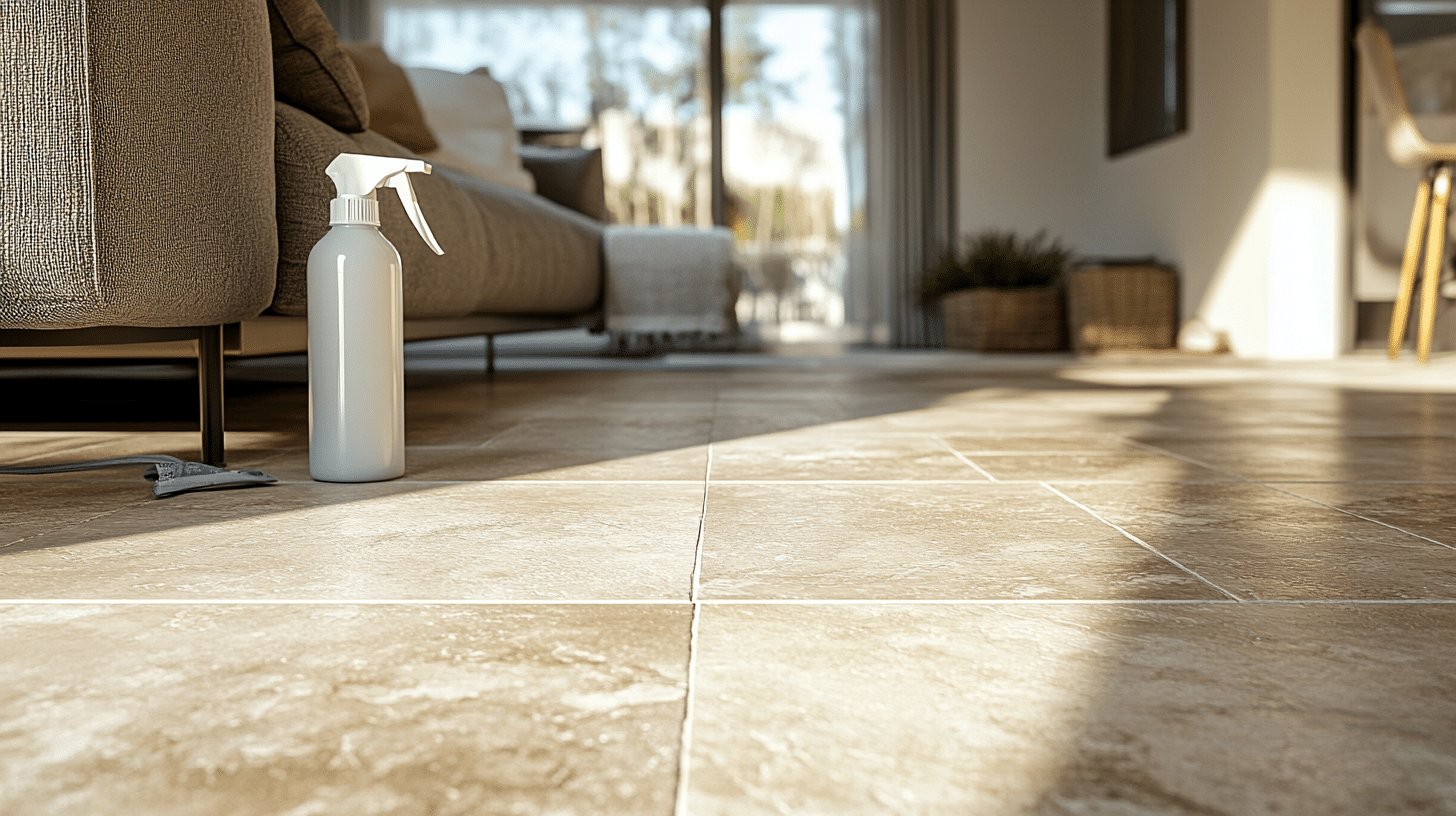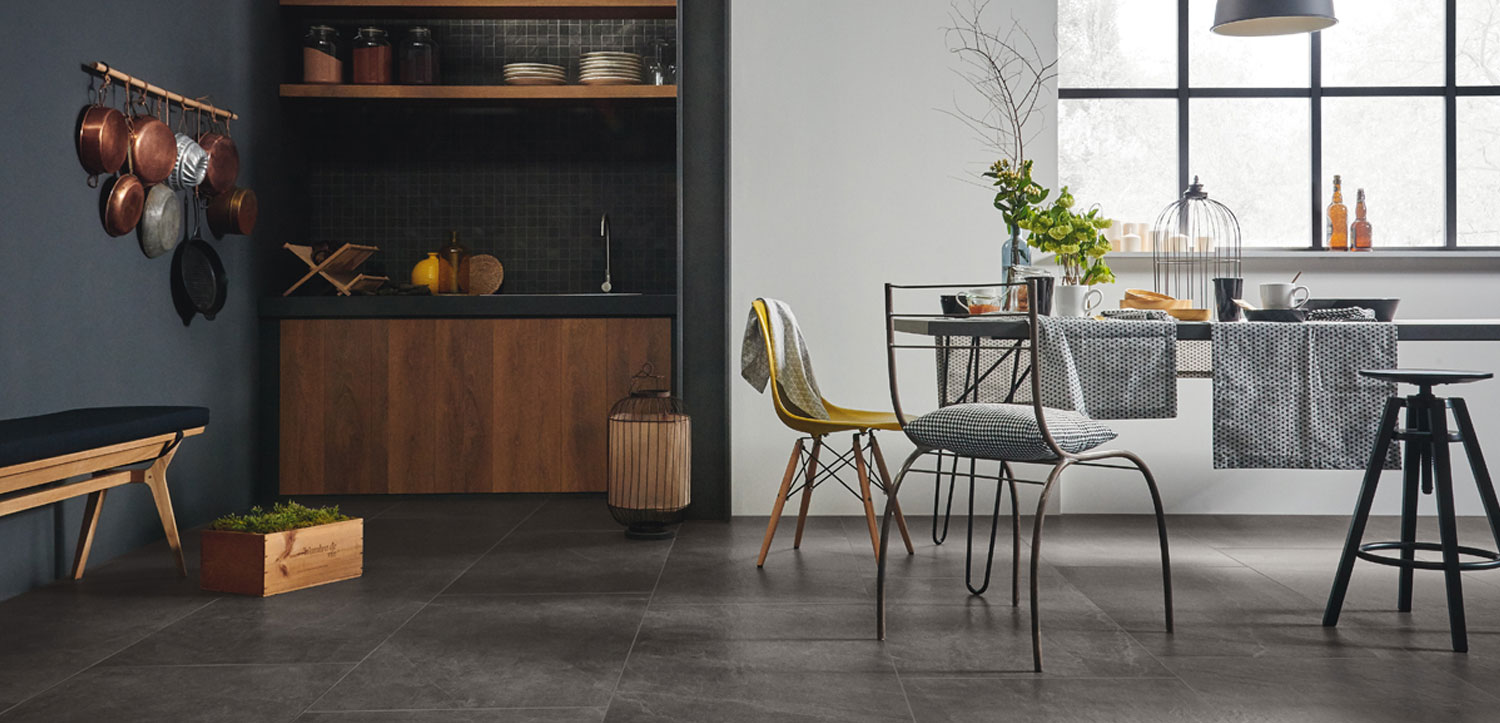
Travertine tiles are a popular choice for Perth homes but they’re tricky to maintain. If you treat these tiles like they’re ordinary floors, you’re setting yourself up for disappointment.
If you want to keep your tiles looking mesmerising, your cleaning routine needs to be up to the task. This guide covers everything you need to know about cleaning and protecting your travertine floors, from daily maintenance to dealing with tough stains.
What Is Travertine?
Travertine, also known as ‘lapis tiburtinus’ or travertine marble, is a type of limestone formed when minerals dissolve in groundwater and resurface through hot springs. This unique formation process creates a stone filled with tiny holes and channels. These pockets of air give travertine its distinctive appearance but also make it particularly vulnerable to stains and damage. Even though these natural pits may be filled during manufacturing, the stone remains naturally porous and reactive to acids, much like marble or other calcium-based stones.
This beautiful (but sensitive) stone has been used in architecture for thousands of years, especially in the Mediterranean. It’s renowned for its luxurious appearance. These tiles are commonly found in both indoor and outdoor spaces, particularly around pools and patios where their natural slip resistance makes travertine an excellent choice.
What Makes Travertine Different?
Unlike ceramic tiles, travertine is:
- porous and easily stained
- sensitive to acidic cleaners
- prone to etching without proper maintenance
- requires regular sealing

This all means that cleaning travertine like regular tiles is a fool’s errand. The wrong products or techniques can permanently damage your floors and any repairs (or replacements) come with a big price tag.
The good news? With the right approach and a thought-out routine, travertine maintenance can be rewarding and straightforward.
How to Clean Travertine Tiles: A Step-by-Step Guide

Weekly Cleaning Routine
Introduce these steps into your day-to-day cleaning regimen to keep your travertine tiles looking their best.
Begin by sweeping or vacuuming to pick up loose dirt and debris. Next, damp mop the surface with warm water, using a pH-neutral cleaner to maintain the stone’s integrity. We recommend cleaner’s specifically formulated for use on stone as harsh bleach or other cleaners risk permanent stains. Finally, dry the floor with a soft, clean cloth, preferably made of microfibre.
Deep Cleaning Travertine Tiles
For a more intensive clean, when your tiles look dull or discoloured, begin by preparing a solution of warm water mixed with a pH-neutral stone cleaner. Using a soft mop, apply this solution carefully, making sure not to saturate the surface with too much water. Allow the cleaner to sit and penetrate the grime for several minutes before gently scrubbing with a soft-bristled brush.
Once sufficiently scrubbed, rinse the tiles thoroughly with clean water and make sure that all cleaner residue is removed. Once again, finish by thoroughly drying the surface with a microfibre cloth.
- New tiles: Seal immediately after installation
- High-traffic areas: Once per year
- Low-traffic areas: Every 18-24 months
How to Clean Grout Between Travertine Tiles
Grout’s Hidden Challenges
Grout lines can gather unsightly dirt and grime deceptively quickly, marring the beauty of your travertine tiles. By embracing a routine cleaning schedule, you can fend off build-up while preserving your grout’s original colour.
Steer Clear of Harsh Products
As we continue to reiterate, refrain from using bleach or acidic cleaners on travertine grout as they may lead to discolouration or even damage. Instead, opt for pH-neutral solutions designed specifically for natural stone surfaces. This produces a safer, more gentle clean. If in doubt, do a spot check somewhere hidden.
Enhance with a Grout Sealer
Following a deep clean, applying grout sealer is wise. This is a ‘low effort, high reward’ exercise, shielding against future stains while increasing the time between intensive cleaning sessions.
Preventing Damage to Travertine Tiles
Prevention is always better than cure. Here are some best practices to keep your tiles looking pristine:
- Place heavy-duty mats at all entrances to catch dirt and grit
- Use felt pads under furniture legs to prevent scratching
- Clean spills immediately (especially acidic liquids like wine or citrus juice)
- Consider area rugs in high-traffic zones like hallways
- Use trivets or coasters under hot items and drinks
- Avoid dragging heavy objects across the floor
- Trim your pet’s nails to prevent scratching
- Invest in high-quality tiles
These simple precautions can extend the time between deep cleanings and reduce maintenance required.
How to Remove Stains from Travertine Tiles
Different stains need different treatments. Here’s what works:
Oil Stains (grease, cooking oil, cosmetics)
- Mix baking soda and water into a paste
- Cover the stain completely
- Place plastic wrap over the paste
- Leave overnight
- Rinse thoroughly with clean water
- Dry with a soft cloth.
Food and Drink Stains
- Mix 12% hydrogen peroxide with a few drops of ammonia
- Apply to the stain
- Wait 10 minutes
- Rinse completely
- Dry immediately.
Stubborn Stains
For stains that won’t budge, you’ll need to either:
- Make a poultice (which is easier said than done)
- Call a professional (recommended for valuable tiles)
Always test cleaning solutions on a hidden area first.
Maintaining and Sealing Travertine for Long-Term Protection
For long-term protection, sealing your travertine tiles is a necessity. While travertine does not fade easily, sealing prevents erosion from water, rain and ambient humidity.
When to Seal
- New tiles: Seal immediately after installation
- High-traffic areas: Once per year
- Low-traffic areas: Every 18-24 months
How Often Should I Reseal?
Drop water on the tile. If it doesn’t bead up, it’s time to reseal.
Choosing a Sealer
Look for:
- Penetrating sealers (not surface sealers)
- Natural stone specific products
- Premium brands (cheap sealers = frequent resealing)
It’s worth noting that prolonged sun exposure can cause sealers to degrade more quickly. While travertine is resistant to fading as far as stone tiles go, we recommend opting for a UV-resistant sealer for WA homes.
Travertine Care Recap
Remember:
- Clean spills immediately to prevent staining
- Never use vinegar, bleach or harsh cleaners
- Sweep or vacuum daily or weekly to prevent scratches
- Use pH neutral cleaners only
- If in doubt, call a professional tile cleaner.
Looking after travertine isn’t complicated once you know the basics. Follow this guide and your tiles will stay looking good for years.
Explore Perth’s Greatest Range Of Travertine Tiles
If you’re looking to invest in quality travertine tiles for your home, look no further than Ceramics International. We stock a wide range of home tiles to suit all rooms, eras and tastes. Browse our travertine tile collection online or visit our Osborne Park showroom today to see these dazzling tiles in person.




